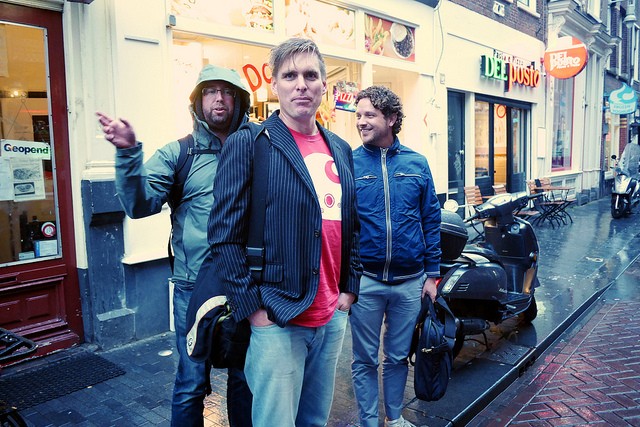
You might also like:
THE POINT ISN’T TO SCARE YOU away from traveling here, but to simply make you more informed. Be conscious. Know what impact you have as a traveler.
1. Your interest in our sex industry may be funding human trafficking.
Even though prostitution is legal in Holland, organized crime is firmly embedded in the Amsterdam Red Light District. Since it’s not possible to obtain a work visa for prostitution for foreigners, many come here illegally through organized crime networks. It is estimated that 80% of the prostitutes in Amsterdam are not EU-citizens. Accounts of forced labor and sexual exploitation through networks of violent pimps and loverboys are grueling.
To combat human trafficking, the Dutch government has increased scrutiny and reduced the number of brothels, but the number of tourists visiting the Red Light District keeps on growing, encouraging human trafficking. Meanwhile, most locals prefer to avoid the area.
2. Your Airbnb rental may be driving up rental prices for locals.
The number of tourists in Amsterdam has grown and will keep growing massively. More than 8 million tourists visit Amsterdam every year. Projections say that the city will attract 30 million visitors annually in 2025. That’s quite something for a city with 800,000 inhabitants.
Most tourists prefer a place to stay with a local host, offered by the many online platforms like Airbnb. Even though this brings some extra money in the bank for the locals renting out their place, it also contributes to the massive housing shortage and drives up the rental/buying price for locals.
3. You may be causing danger on the road.
Tourists on bikes in the center of Amsterdam not only make the roads in the city center a lot busier, but also makes them less safe. Most tourists are not used to riding a bike and don’t know that they can be a danger to themselves and to locals. I’ve seen them suddenly stop in the middle of the road to take a picture of a canal, ride next to each other in small streets blocking all other traffic, take the wrong way on the cycling path, and get stuck in the tram rails.
Between 2000 and 2011 the number of cyclists who were severely injured increased by 50%. There aren’t any official statistics on the number of bike accidents involving foreigners because the police doesn’t record the nationality of the offender and/or the victim, but the emergency room of a hospital in the city center confirms that about 200 cases per year involve tourist-cycling accidents
4. You may be driving out the shops and products locals need.
For reasons locals will never understand, many tourists buy tons of trashy souvenirs and products in Amsterdam. This has steeply increased the number of shops in the city center selling fake Delfts Blue, weed-related products, smoking accessories, and wooden shoes.
This comes at the expense of shops offering products and services for locals. Ever wondered why there’s so many waffle and ice cream shops in the center of Amsterdam? That brings me to the next point:
5. You may be contributing to drug-related crime and nuisance.
It is estimated that a significant part of the 8 million tourists that visit Amsterdam every year comes to consume drugs such as weed, cocaine, mushrooms, and more. Even though it’s not illegal to smoke pot, tourists often have little prior experience with drugs, and are not aware of how strong it can be here compared to other countries. There have been several (deadly) incidents involving drugs, and a disproportionate share of those incidents involves foreigners.
Meanwhile, hard drugs are illegal in Holland, and hard-drug dealers include well organized, often violent gangs. Those waffle and ice cream shops? They are often suspected to be used for laundering drug money.
Source: matadornetwork.com
